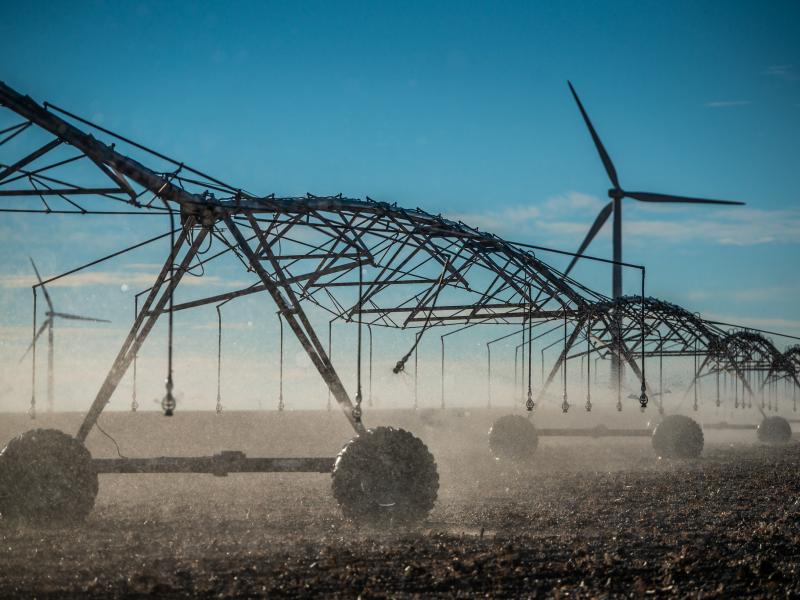
Human-Earth
System Interactions
Human-Earth
System Interactions
Understanding the complex
interactions shaping the future
Understanding the complex
interactions shaping the future
Humans affect the Earth system through processes like generating emissions and altering the land surface for agriculture or urbanization. Correspondingly, changes in the Earth system, including increases in temperatures and extreme weather events, affect human systems like our ability to produce energy and agriculture. The field of human-Earth system interactions research accounts for these intersections when studying important regional and global systems.
Much of this research involves the feedbacks that happen at the interface of human and Earth systems, which falls under the field of MultiSector Dynamics. Developing models that can accurately project the futures of these processes is key to increasing scientific understanding of the evolving human and Earth systems as well as helping inform decision-making related to projected scenarios.
Why Modeling Human-Earth System Interactions Matters
The interactions between human and Earth systems are at the core of numerous global economic, environmental, and security issues. Modeling human-Earth system interactions is critical to growing and maintaining scientific understanding of future global changes. Modeling provides accurate information about the impacts of both human and natural systems on one another.
These models operate at a range of scales in space, time, and geographic area. While some models have been specifically developed to work on multisectoral problems, the capabilities of other existing Earth or human-focused models have been modified to generate multisectoral information.
Human-Earth System Interactions at Pacific Northwest National Laboratory
Pacific Northwest National Laboratory (PNNL) scientists continue to play major roles in leading human-Earth system interactions research. The Joint Global Change Research Institute (JGCRI), a PNNL and University of Maryland collaborative effort, houses the Global Change Analysis Model (GCAM). PNNL acts as the home of and primary development institution for GCAM, a global model that represents the behavior of, and interactions between, five systems: energy; water; agriculture and land use; the economy; and the climate. GCAM is a freely available community model with an active global user base. PNNL researchers have used GCAM tools to evaluate how temperature changes will affect electricity investments, explore how virtual water trading will evolve, and determine how international crop yields will influence U.S. agricultural production. The GCAM community hosts annual meetings and has developed video tutorials to guide new users in how to use different tools.
The Global Change Intersectoral Modeling System (GCIMS) project focuses on developing an open-source framework that facilitates integrating different models. The framework enables researchers to model changes in an integrated human-Earth system at regional to global and seasonal to centennial scales. In addition to creating an internally consistent approach to modeling multiple systems, researchers have worked to maintain computational efficiency. GCIMS components include GCAM, the climate emulator Hector, and the land use model Demeter.
The Integrated Multisector Multiscale Modeling (IM3) project couples open-source human and Earth system models from city to regional to national scales within the U.S. to project future vulnerabilities and resilience to extreme events as well as long-term changes. IM3 researchers have worked to develop new models that can couple to one another and previously existing models, such as GCAM. Currently, IM3 is studying the influences of future heat waves on urban microclimates and the supply, demand, and operations of the regional electric grids; the effect of future droughts and land use and land cover change on surface and groundwater management across the U.S.; and the potential benefits of drought adaptations in the Upper Colorado River Basin in the Western U.S., including the use of financial risk instruments. Recent work includes exploring how inflow forecasts influence the water released by dams, improving precipitation simulations over the central U.S., and comparing the impacts of building sector model resolution on projections of electricity consumption in buildings.
PNNL has been a leader in modeling human-Earth system interactions for decades and is well positioned to continue to play a large role in the field for decades to come.




